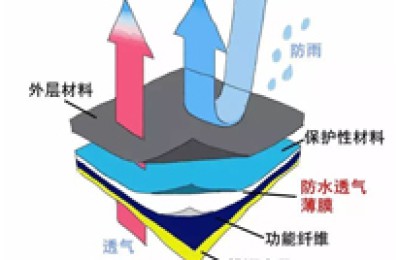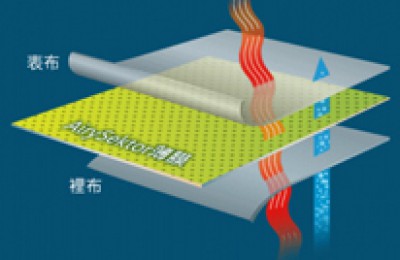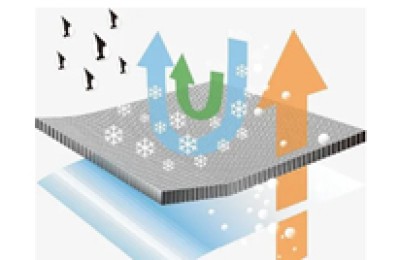Faced with today’s market crisis, the profit margins obtained by spinning companies have been severely squeezed by many unfavorable factors. The cost of raw cotton has accounted for more than 60% of the total cost. Where does the profit come from? Only on the premise of ensuring the quality requirements of customers’ finished yarns can we scientifically and reasonably reduce the combing noil rate and produce yarn that can meet customer quality requirements.
The combing noil rate and the yarn quality index are not a simple linear relationship, within a certain range Within, as the combing noil rate increases, the short lint rate of combed sliver decreases, and the yarn quality improves greatly. However, when the noil rate increases to a certain level, the short lint rate of combed sliver decreases gradually. , even if the noil rate is increased, the elimination rate of short staple rate in combed sliver is extremely small, and the improvement in yarn quality is not large.
According to quality requirements
In production, we must first accurately understand the customer’s requirements According to the requirements of product quality indicators, the minimum combing noil rate can be determined through rapid testing of yarn quality, and the quality yarn that meets the needs of customers can be produced, thereby reducing costs and maximizing benefits. Before a new variety is put on the machine, more than two noil rate adjustment schemes can be used to conduct a quick trial spinning test of yarn quality. The most economical low noil rate spinning can be selected from the results of the quick yarn quality test that afternoon. Operation plan. The daily report of yarn quality can reflect the quality situation of the pre-spinning process 10 days ago. Rapid test spinning of a certain variety of yarn quality can be carried out on a regular basis to control the actual quality status of the current semi-finished product process and conduct timely testing. Adjust accordingly. Test data after many rapid trial spinnings show that an increase or decrease of 0.5 percentage points in the combing noil rate has little impact on the yarn quality, which also provides a basis for proper control of the combing noil rate.
The combing machine has an automatic adjustment function for the noil rate. When the noil rate fluctuates greatly, there must be an abnormality in the upstream process, such as: short lint in the raw material. Factors such as fluctuations in moisture content or moisture regain of raw materials, large-scale process adjustments in the blowroom and carding processes, sudden drastic changes in the outdoor weather environment, and abnormal fluctuations in temperature and humidity. Therefore, do not adjust the combing noil rate rashly and hurriedly. You should conduct an AFIS tester test in time to use static braking to find out the cause and then make corresponding adjustments to avoid fluctuations in yarn quality. At the same time, a four-in-one emergency information feedback and communication network including blowroom, combing, laboratory, production department, worker technicians from various departments, and process engineers can be established to communicate information with each other in a timely manner and jointly solve difficult problems.
We conduct self-examination of the noil rate test more than twice a week to control the fluctuation curve of the noil rate. Usually, the noil rate fluctuates greatly on Mondays, which may be related to changes in the moisture regain of raw materials caused by the shift on Saturdays. The raw material pre-humidification treatment room can pre-humidify the raw material to reduce the probability of fiber damage due to poor fiber toughness due to low moisture regain of the raw material during the carding process. Strictly implement the fixed table supply system for each process, the reasonable matching system of large and small combing rolls, and the system of filling missing strips in front of the machine, increase the number of operations for cleaning the top comb intarsia, and reduce the table difference and eye difference of the noil rate of the combing machine, so as to Reduce yarn quality variation.
Reasonably configure the spacing
In the pre-draw frame, precision Orthogonal experiments on the carding machine to appropriately enlarge the roller spacing and the back drafting ratio can help us find the best process parameters to reduce sliver neps and short staple rate. Because although a small draft roller gap can obtain a particularly good evenness CV value level, it is by no means the best yarn value. This may damage the long fibers, increase the short lint content of the combed sliver, and also increase the combing noil rate, increase the variation in yarn quality, and bring negative effects.
We must look at the cylinder combing distance of the combing machine dialectically. The material of imported cylinder gears is alloy steel. The gears have high sharpness, hardness and surface roughness. For example, they are used in the carding distances of the front area, tightest point and middle and rear areas of the cylinder on the E62 machine. It is 0.4 mm, 0.3 mm and 0.4 mm, which can fully meet the needs of the cylinder for refined combing of the beard. It has a very high degree of refined combing of the beard, forming a single fiber effect. If the carding distance of this type of cylinder is reduced, it will aggravate the fiber damage and increase the short staple rate and noil rate of the combed sliver. Although the domestic cylinder gears are made of imported steel belts, the tooth shape, material, and heat treatment process of the gears need to be further improved. The sharpness and hardness of the gears are still far behind those of imported cylinders, and the impact on the fiber The ability to puncture, open, and remove neps and short lint is slightly poorer.
Through a large number of comparative test results of adjusting the cylinder comb spacing, we found that the combing spacing of the cylinder should be appropriately reduced, such as the front area is 0.30 mm ~ 0.35 mm, the tightest The point is 0.20 mm and the back area is 0.25 mm, and the eye difference of each carding distance is controlled and narrowed. The carding elements are scientifically managed, and the yarn quality and performance of the spun yarn can be greatly improved while the carding noil rate remains unchanged. In spun yarn + 200%, the neps can be reduced by more than 20%, which is actually equivalent to reducing the combing noil rate.
In production, we must also scientifically establish a viewpoint on product quality positioning. Products with a Uster Gazette level of 5% are good, but the price is high; products with a Uster Gazette level of 95% have a strong price competitive advantage. Therefore, according to the customerAccording to the quality index requirements, the cotton is reasonably allocated to meet the acceptable level of the middle and lower limits of the customer’s quality index, scientifically and reasonably reducing the combing noil rate, and maximizing economic benefits with the lowest transportation and management costs. </p







